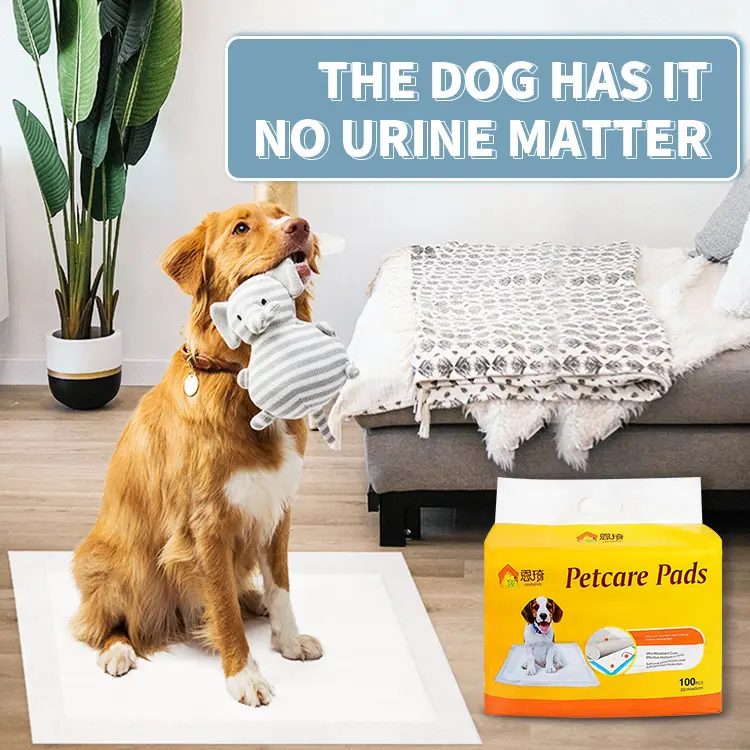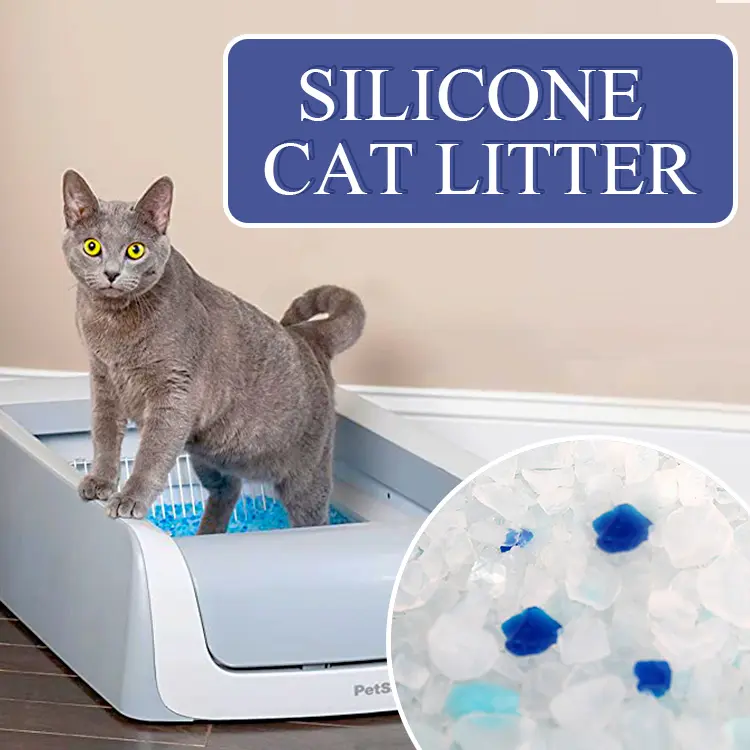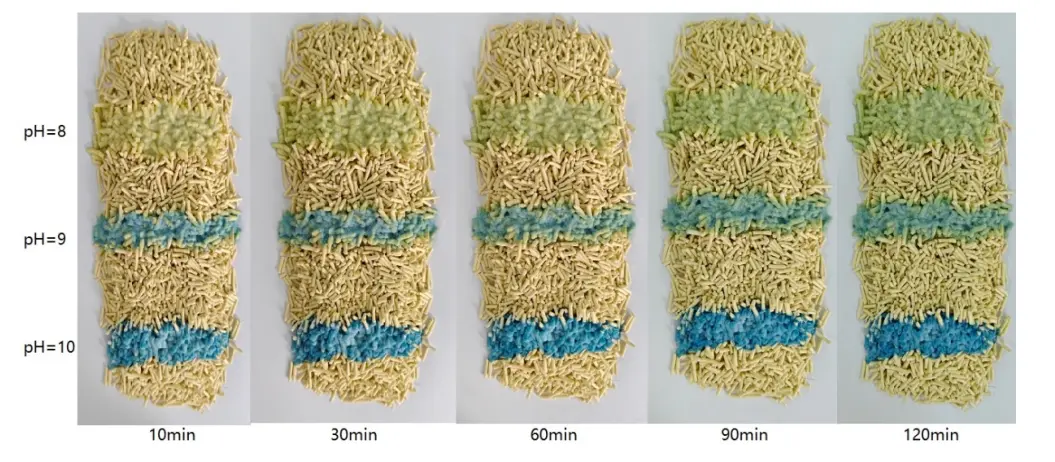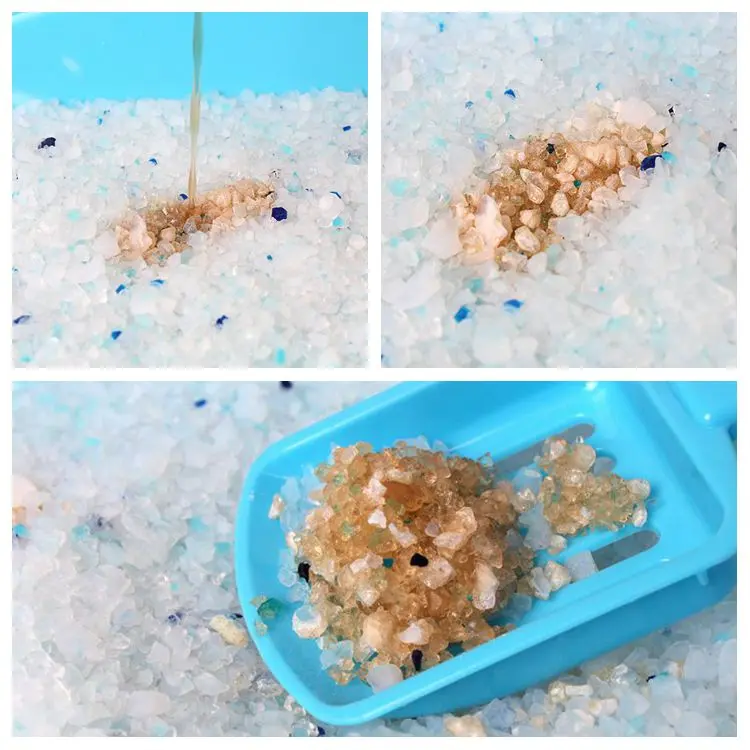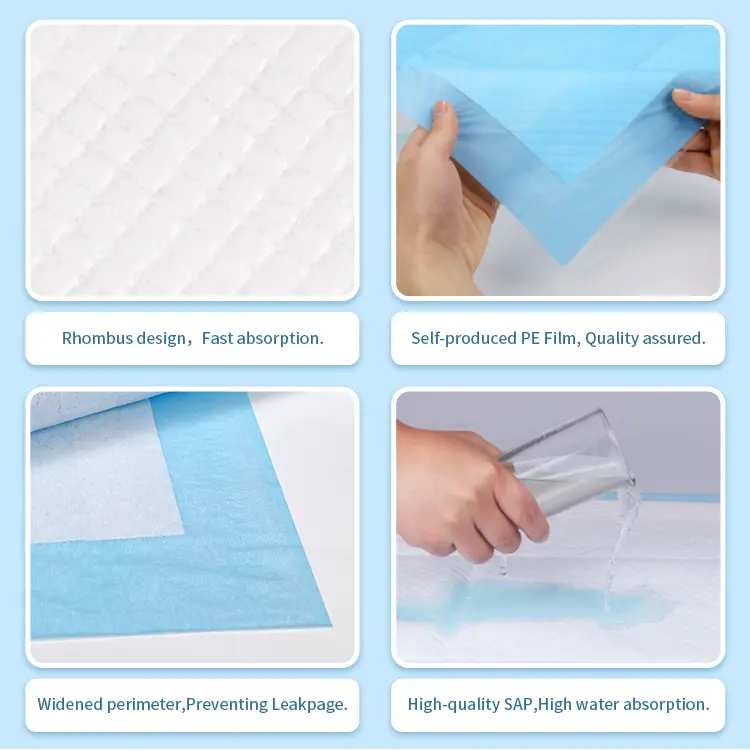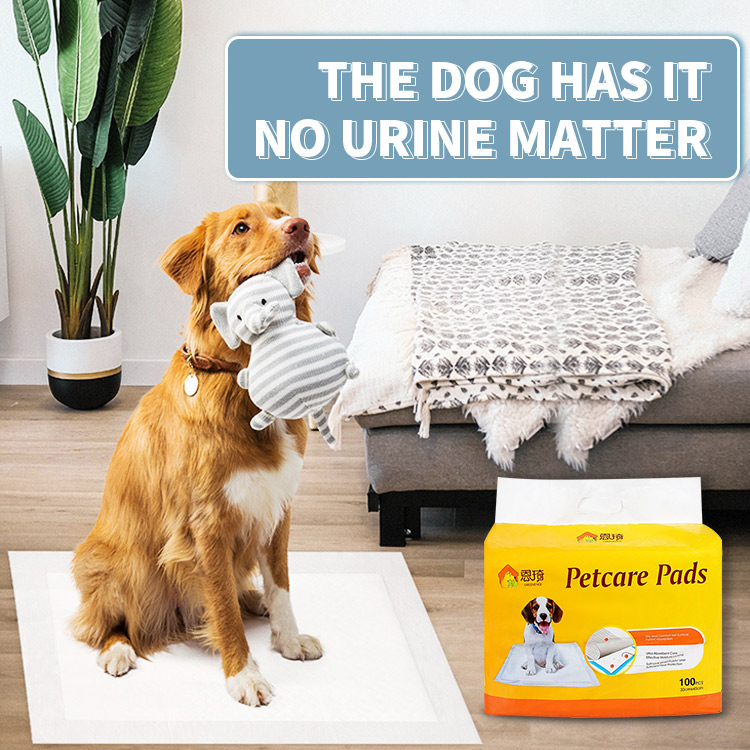Silica Cat Litter vs Clumping Cat Litter: A Comprehensive Comparison
Choosing the right cat litter is an essential aspect of cat ownership, significantly impacting both the pet's health and the owner's convenience. Two popular types of cat litter are silica gel (crystal) litter and clumping (clay-based) litter. Each has its distinct advantages and drawbacks, making the choice dependent on various factors including cost, convenience, odor control, and environmental impact.
Silica Cat Litter
Composition and Mechanism:Silica cat litter is composed of tiny silica gel beads, a form of silicon dioxide. These beads are highly absorbent and work by trapping moisture and odors inside their structure.
Advantages:
Odor Control: Silica gel beads are excellent at controlling odors. They absorb moisture quickly, trapping urine and neutralizing smells, making them ideal for households where odor control is a priority.
Low Dust: Silica litter produces minimal dust, reducing the risk of respiratory issues for both cats and humans. This makes it a suitable choice for households with allergy concerns.
Low Maintenance: This type of litter doesn't need to be changed as frequently as clumping litter. A single bag of silica gel litter can last up to a month for one cat, depending on usage.
Lightweight: Silica litter is generally lighter than clay-based clumping litter, making it easier to handle and transport.
Disadvantages:
Cost: Silica litter tends to be more expensive than clumping litter. The initial cost can be a deterrent for some pet owners.
Tracking: Silica beads can be tracked out of the litter box by the cat’s paws, potentially creating a mess around the home.
Texture: Some cats may find the texture of silica beads uncomfortable on their paws and may resist using it.
Clumping Cat Litter
Composition and Mechanism:Clumping cat litter is typically made from bentonite clay. When the clay particles come into contact with moisture, they clump together, forming solid masses that are easy to scoop out.
Advantages:
Ease of Cleaning: The primary benefit of clumping litter is its ease of cleaning. The solid clumps formed by urine and feces can be easily removed, keeping the rest of the litter box clean.
Cost-Effective: Clumping litter is generally more affordable than silica litter. It is widely available and comes in various price ranges to suit different budgets.
Preference: Many cats prefer clumping litter because its texture is similar to natural soil, making it more comfortable for digging and burying waste.
Variety: Clumping litter comes in various formulations, including scented, unscented, and even environmentally friendly options, providing more choices for pet owners.
Disadvantages:
Dust: Clumping litter can produce a significant amount of dust, which may cause respiratory problems for both cats and their owners, particularly those with allergies or asthma.
Frequent Changes: While the clumps are easy to remove, the remaining litter still needs to be changed regularly to maintain cleanliness and prevent odor buildup.
Weight: Clumping litter is heavier than silica litter, which can be inconvenient for carrying and pouring.
Environmental Considerations
Environmental impact is an increasingly important factor for many pet owners. Silica litter, while low in dust and long-lasting, is not biodegradable. Clumping clay litter is derived from strip mining, which has significant environmental repercussions, and it also does not break down easily in landfills. However, there are eco-friendly clumping litters made from renewable resources like corn, wheat, or recycled paper, offering a more sustainable alternative.
How Do I Transition My Cat to a New Type of Litter?
Transitioning your cat to a new type of litter can be a delicate process. Cats are creatures of habit, and a sudden change in their litter box can lead to stress and behavioral issues. However, with a careful and gradual approach, you can successfully make the switch.
Understanding Your Cat's Preferences
Before making any changes, it's essential to understand your cat's preferences. Cats can be very particular about their litter, so observe their behavior and preferences with the current litter. Factors such as texture, scent, and dust levels can all influence your cat's comfort and willingness to use the litter box.
Step-by-Step Transition Process
Introduce Gradually:
Start by mixing a small amount of the new litter with the existing litter. A ratio of 25% new litter to 75% old litter is a good starting point.
Over the course of a week or two, gradually increase the amount of new litter while decreasing the old litter. Monitor your cat's reaction closely during this period.
Provide Multiple Litter Boxes:
Set up an additional litter box with only the new litter. This gives your cat the option to explore and get used to the new litter at their own pace.
Ensure that the additional litter box is placed in a quiet, accessible location where your cat feels safe.
Maintain Cleanliness:
Keep both litter boxes clean. Cats are more likely to use a clean litter box, so scoop out waste regularly and change the litter as needed.
Pay attention to any signs of avoidance or accidents outside the litter box, which could indicate that the transition is too fast or the new litter is not well-received.
Observe and Adjust:
Monitor your cat’s behavior closely. If you notice any signs of distress, such as vocalizing near the litter box, excessive scratching, or eliminating outside the box, slow down the transition process.
Some cats may take longer to adjust, so be patient and make adjustments based on their comfort level.
Dealing with Resistance
Despite your best efforts, some cats may resist the change. If your cat is showing signs of stress or completely avoiding the new litter, try the following tips:
Revert Temporarily: If resistance is strong, revert to the old litter completely and start the transition process again more slowly.
Different Litter Types: Experiment with different types of litter. Your cat might prefer a different brand or a different type of litter altogether, such as clumping vs. non-clumping or scented vs. unscented.
Consult a Veterinarian: If your cat continues to have difficulty adjusting, consult a veterinarian. They can rule out any underlying medical issues that might be causing litter box aversion and provide further guidance.
Final Tips
Positive Reinforcement: Encourage your cat to use the new litter by offering treats and praise when they use the new litter box. Positive reinforcement can help build a positive association with the new litter.
Avoid Punishment: Never punish your cat for accidents outside the litter box. This can increase stress and exacerbate the problem.
Consistency is Key: Once the transition is complete, try to stick with the new litter to avoid further changes that can confuse and stress your cat.
Transitioning your cat to a new type of litter requires patience, observation, and gradual changes. By understanding your cat's preferences and following a structured approach, you can help ensure a smooth and stress-free transition. Remember, every cat is unique, so be prepared to adapt the process to meet your cat's specific needs.
What Are the Pros and Cons of Silica Cat Litter?
Silica cat litter, also known as crystal litter, is a popular choice among cat owners for its superior odor control and low maintenance. However, like any product, it has its advantages and disadvantages.
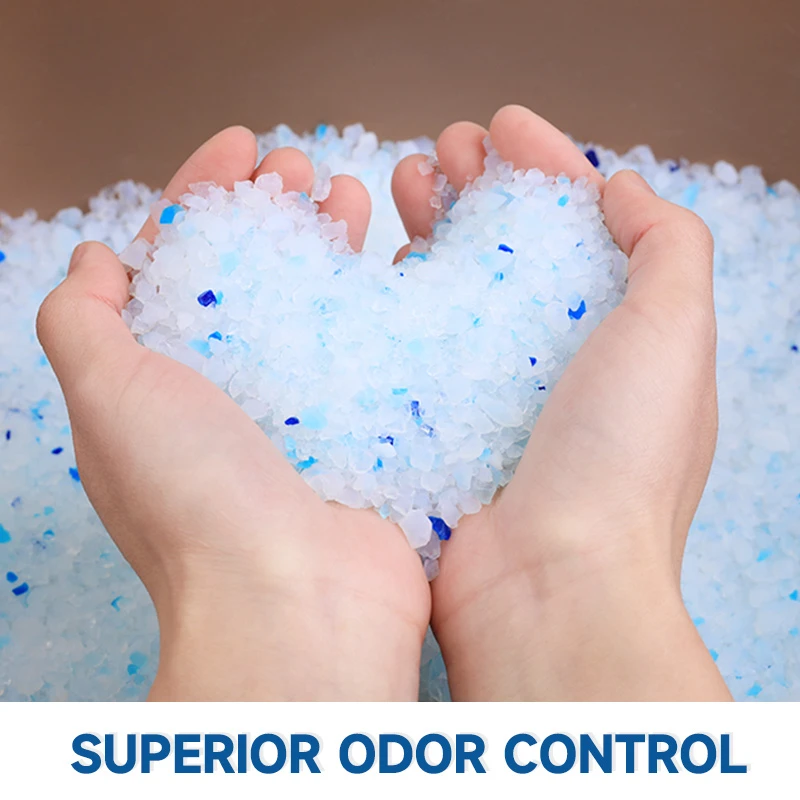
Pros of Silica Cat Litter
Excellent Odor Control:
Silica litter excels in odor control. The silica crystals absorb moisture and trap odors inside, keeping the litter box smelling fresh for longer periods. This makes it an ideal choice for households where odor management is a priority.
Low Maintenance:
One of the significant benefits of silica litter is its low maintenance. Unlike clumping litter, which requires daily scooping of clumps, silica litter only needs to be stirred and changed less frequently. A single bag of silica litter can last up to a month for one cat.
Low Dust:
Silica litter produces minimal dust compared to traditional clay-based litters. This is beneficial for both cats and owners, especially those with respiratory issues or allergies. Less dust also means a cleaner home environment.
Lightweight:
Silica litter is lighter than clay-based clumping litter, making it easier to handle, pour, and transport. This can be a significant advantage for pet owners who have difficulty lifting heavy bags of litter.
Cons of Silica Cat Litter
Higher Cost:
Silica litter is generally more expensive than clumping clay litter. The initial cost can be a deterrent for some pet owners, especially those with multiple cats or on a tight budget. However, the extended lifespan of silica litter can offset some of these costs over time.
Tracking:
Silica crystals can be tracked out of the litter box by the cat's paws, leading to a potential mess around the house. While silica litter is less dusty, the larger granules can scatter more easily, requiring regular sweeping or vacuuming.
Texture:
Some cats may find the texture of silica crystals uncomfortable on their paws, leading to litter box aversion. Cats with sensitive paws or those used to softer, finer litters may resist using silica litter.
Non-Biodegradable:
Silica litter is not biodegradable and can contribute to landfill waste. Environmentally conscious pet owners may prefer biodegradable alternatives like recycled paper, corn, or wheat-based litters.
Additional Considerations
Health Concerns: While silica litter is generally safe, ingestion of silica crystals can cause gastrointestinal issues in cats. Ensure that your cat is not eating the litter and consult a veterinarian if you notice any signs of illness.
Monitoring Usage: Because silica litter absorbs moisture and odors, it can be challenging to see the exact spots where your cat has urinated. Regular stirring and changing of the litter are essential to maintain a clean environment for your cat.
Silica cat litter offers several benefits, including excellent odor control, low maintenance, low dust production, and lightweight properties. However, it also has its drawbacks, such as higher cost, tracking issues, and potential discomfort for some cats. Understanding these pros and cons can help you determine if silica litter is the right choice for your household. Consider your cat's preferences, your budget, and your environmental concerns when making your decision.
What Are the Pros and Cons of Clumping Cat Litter?
Clumping cat litter is one of the most popular types of cat litter due to its ease of cleaning and affordability. Made primarily from bentonite clay, clumping litter forms solid clumps when it comes into contact with moisture, making waste removal simple.
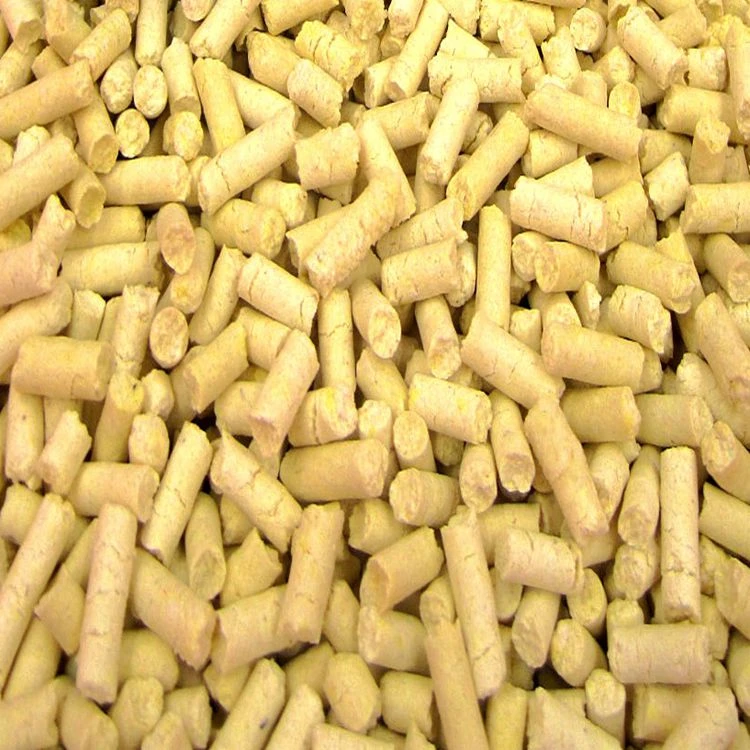
Pros of Clumping Cat Litter
Ease of Cleaning:
The primary advantage of clumping cat litter is its ease of cleaning. When your cat urinates, the litter forms solid clumps that are easy to scoop out, leaving the rest of the litter box clean. This helps maintain a sanitary environment for your cat.
Cost-Effective:
Clumping litter is generally more affordable than silica litter. It is widely available and comes in various price ranges to suit different budgets. For pet owners looking to manage costs, clumping litter is an economical choice.
Preference for Cats:
Many cats prefer the texture of clumping litter, as it is similar to natural soil. This makes it more comfortable for them to dig and bury their waste, reducing the likelihood of litter box aversion.
Variety of Options:
Clumping litter is available in a wide range of formulations, including scented, unscented, low-dust, and even eco-friendly options. This variety allows pet owners to choose a product that best meets their needs and preferences.
Cons of Clumping Cat Litter
Dust Production:
One of the main drawbacks of clumping litter is the dust it produces. Dust can be a significant issue for cats with respiratory problems or allergies and can also affect pet owners with similar health concerns. Although low-dust formulations are available, some dust is almost always present.
Frequent Changes Required:
While clumping litter is easy to clean, it still requires regular changes to maintain cleanliness and prevent odor buildup. Depending on the number of cats and the size of the litter box, the entire contents may need to be replaced weekly or biweekly.
Weight:
Clumping litter is heavier than silica litter, making it more cumbersome to carry and pour. This can be inconvenient for pet owners who have difficulty lifting heavy objects or who need to transport the litter.
Environmental Impact:
Traditional clumping litter is made from bentonite clay, which is obtained through strip mining. This process has significant environmental repercussions, including habitat destruction and soil erosion. Additionally, clay litter is not biodegradable and contributes to landfill waste. However, there are eco-friendly clumping litters made from renewable resources like corn, wheat, or recycled paper that mitigate these environmental concerns.
Additional Considerations
Tracking: Clumping litter can be tracked out of the litter box by the cat's paws, leading to a mess around the home. Using a litter mat outside the box can help reduce tracking.
Health Concerns: Ingesting clumping litter can cause gastrointestinal issues in cats, particularly kittens. Ensure that your cat is not eating the litter and consult a veterinarian if you notice any signs of illness.
Clumping cat litter offers several advantages, including ease of cleaning, cost-effectiveness, and a variety of options to suit different preferences. However, it also has its drawbacks, such as dust production, frequent changes, weight, and environmental impact. Understanding these pros and cons can help you decide if clumping litter is the right choice for your household. Consider your cat's preferences, your budget, and your environmental concerns when making your decision.
How Often Should I Change My Cat's Litter?
Maintaining a clean litter box is crucial for your cat’s health and comfort. However, determining how often to change the litter can be confusing, as it depends on several factors such as the type of litter, the number of cats, and the individual cat’s habits.
Factors Influencing Litter Change Frequency
Type of Litter:
Clumping Litter: Clumping litter forms solid masses when wet, making it easy to remove waste daily. However, the entire box should be emptied and cleaned every 2-4 weeks to prevent odor buildup and maintain hygiene.
Silica (Crystal) Litter: Silica litter can last up to a month for one cat due to its high absorbency and odor control. Despite this, it’s essential to stir the litter daily to distribute moisture and replace the litter entirely every 3-4 weeks.
Non-Clumping Litter: Non-clumping litters absorb moisture but do not form clumps. These litters should be completely changed at least once a week to maintain cleanliness and prevent odors.
Number of Cats:
The more cats you have, the more frequently you’ll need to change the litter. For households with multiple cats, consider changing the litter more often to ensure a clean environment for all pets.
Cat Habits and Health:
Some cats are more particular about their litter box cleanliness than others. If your cat avoids the litter box unless it’s spotless, you may need to change the litter more frequently.
Cats with certain health conditions, such as urinary tract infections or kidney issues, may require more frequent litter changes to monitor health and ensure hygiene.
Daily Maintenance Tips
Scooping:
For clumping litter, scoop out solid waste and clumps at least once daily. For non-clumping and silica litters, remove solid waste daily.
Regular scooping helps control odors and keeps the litter box clean, encouraging your cat to use it consistently.
Stirring:
For silica litter, stir the crystals daily to distribute moisture and prevent the formation of saturated spots.
Stirring also helps to prolong the effectiveness of the litter.
Monitoring:
Pay attention to the litter box's smell and appearance. If the litter looks dirty or starts to smell, it’s time to change it, even if it hasn’t reached the typical change interval.
Weekly and Monthly Maintenance
Weekly:
For non-clumping litter, change the entire litter and clean the box thoroughly once a week.
For clumping and silica litters, consider a partial change. Remove some of the old litter and replace it with fresh litter to maintain the overall cleanliness of the box.
Monthly:
Even with regular scooping and stirring, clumping and silica litters should be completely replaced and the box thoroughly cleaned every 3-4 weeks.
Use warm water and mild soap to clean the litter box. Avoid using harsh chemicals that can leave residues and deter your cat from using the box.
Tips for Maintaining a Clean Litter Box
Use Liners:
Litter box liners can make changing the litter easier and help keep the box clean. However, some cats dislike liners and may tear them.
Adequate Litter Depth:
Maintain a sufficient depth of litter (about 2-3 inches for clumping litter and 3-4 inches for silica litter) to allow your cat to dig and cover their waste comfortably.
Litter Mats:
Place a litter mat outside the box to catch litter particles and reduce tracking around the house.
Multiple Litter Boxes:
For multiple-cat households, provide one litter box per cat plus one extra. This helps to reduce territorial issues and ensures that a clean box is always available.
The frequency of changing your cat’s litter depends on various factors, including the type of litter, the number of cats, and your cat’s individual habits. By maintaining a regular cleaning schedule, scooping daily, and monitoring the litter box’s condition, you can ensure a clean and healthy environment for your feline friend. Regular maintenance not only keeps your cat happy but also helps prevent health issues and unwanted litter box behaviors.
How Can I Reduce Litter Box Odor?
One of the most common concerns for cat owners is managing litter box odor. A smelly litter box is unpleasant and can lead to litter box avoidance by your cat. Fortunately, there are several strategies you can implement to reduce litter box odor and maintain a fresh-smelling home.
Choosing the Right Litter
Clumping Litter:
Clumping litter is effective at containing odors because it forms solid clumps when wet, which can be easily removed. Look for clumping litters that are specifically formulated for odor control.
Silica (Crystal) Litter:
Silica litter is known for its superior odor control. The crystals absorb moisture and trap odors, keeping the litter box smelling fresh for longer periods.
Scented vs. Unscented Litter:
Scented litters can mask odors, but some cats may find the fragrance off-putting and avoid the litter box. Unscented litters, particularly those with natural odor control agents like baking soda, can be a good alternative.
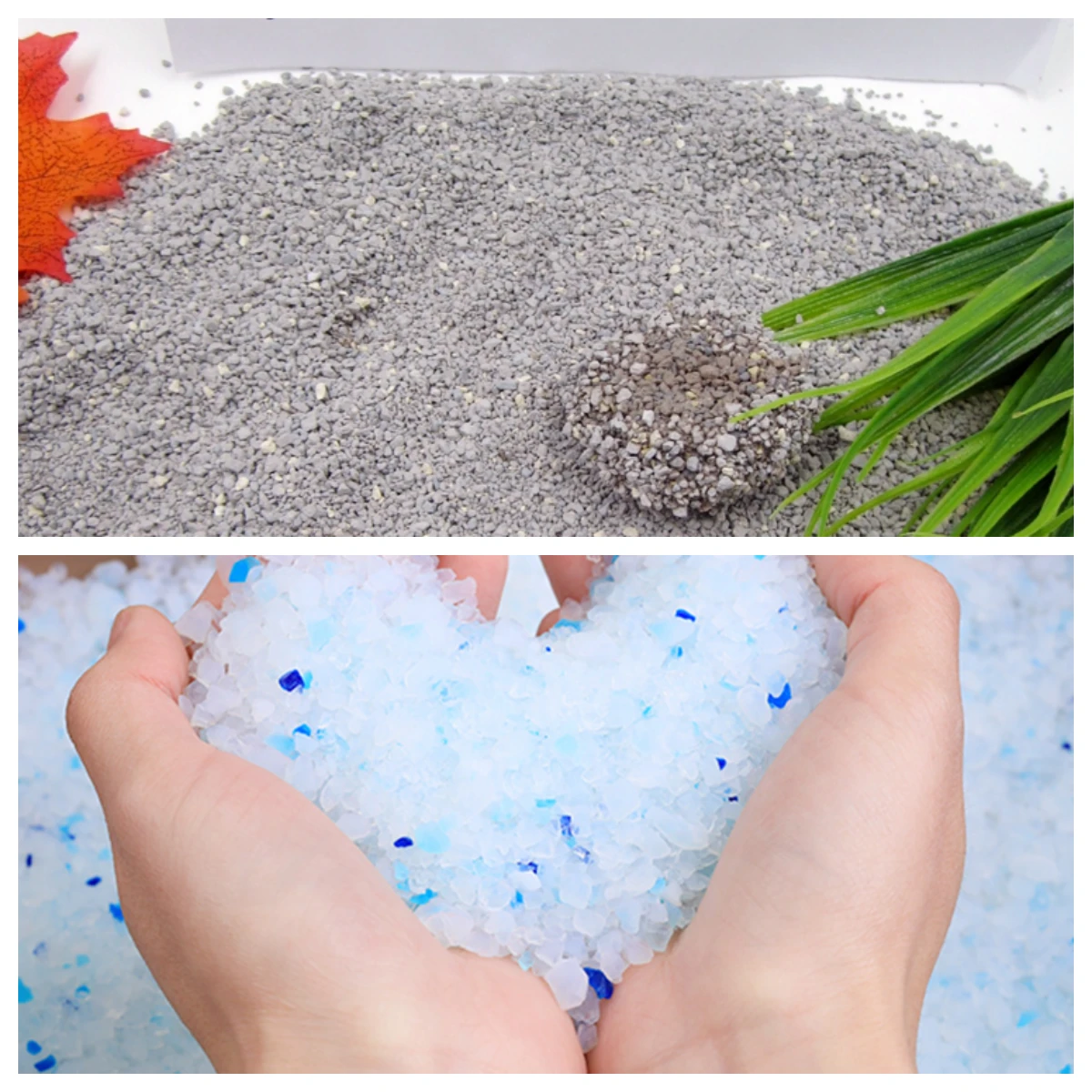
Regular Cleaning Routine
Daily Scooping:
Scoop the litter box at least once a day to remove solid waste and clumps. Regular scooping is crucial for controlling odors and keeping the litter box clean.
Litter Box Liners:
Using litter box liners can make cleaning easier and help reduce odors. However, ensure your cat is comfortable with liners, as some cats may dislike them.
Complete Litter Change:
For clumping and silica litters, completely change the litter and clean the box every 2-4 weeks. For non-clumping litters, change the litter and clean the box at least once a week.
Box Cleaning:
When changing the litter, wash the litter box with warm water and mild soap. Avoid harsh chemicals that can leave a residue and deter your cat from using the box.
Litter Box Placement
Location:
Place the litter box in a well-ventilated area. Good airflow helps disperse odors and keeps the area around the box fresh.
Avoid placing the litter box in humid areas like bathrooms or laundry rooms, as moisture can exacerbate odors.
Multiple Boxes:
In multi-cat households, provide one litter box per cat plus one extra. This helps reduce the concentration of waste in a single box and minimizes odors.
Additional Odor Control Tips
Deodorizers:
Use litter deodorizers or baking soda to help neutralize odors. Sprinkle a thin layer at the bottom of the litter box before adding the litter.
Activated Charcoal:
Place activated charcoal near the litter box to absorb and neutralize odors. Charcoal filters can also be used in litter box enclosures.
Air Purifiers:
Consider using an air purifier with a HEPA filter near the litter box. Air purifiers can help remove airborne particles and odors, improving the overall air quality in your home.
Covered vs. Uncovered Boxes:
Covered litter boxes can help contain odors, but they may also trap smells inside, making it unpleasant for your cat. Ensure good ventilation if you use a covered box, and clean it regularly.
Diet and Health Considerations
Diet:
Your cat’s diet can affect the smell of their waste. High-quality, easily digestible food can reduce strong odors. Consult your veterinarian for dietary recommendations.
Hydration:
Ensure your cat is well-hydrated. Dehydration can lead to concentrated urine, which has a stronger odor.
Health Issues:
Persistent strong odors may indicate health problems such as urinary tract infections or digestive issues. If you notice a significant change in the smell of your cat’s waste, consult your veterinarian.
Reducing litter box odor involves a combination of choosing the right litter, maintaining a regular cleaning routine, strategically placing the litter box, and considering additional odor control measures. By implementing these strategies, you can create a more pleasant environment for both you and your cat. Regular monitoring and adjustments based on your cat’s needs and preferences will ensure a clean and odor-free litter box.
How Can I Train My Cat to Use the Litter Box?
Training a cat to use the litter box is a crucial aspect of cat ownership. While most cats instinctively use a litter box, kittens or newly adopted cats might need some guidance.
Setting Up the Litter Box
Choose the Right Litter Box:
Select a litter box that is appropriate for your cat’s size. Kittens and older cats may need a box with lower sides for easier access. Covered boxes can provide privacy, but ensure your cat is comfortable using them.
Select the Right Litter:
Start with a litter that is similar to what your cat has previously used, if known. Many cats prefer unscented, clumping litter that mimics natural soil.
Placement:
Place the litter box in a quiet, accessible location. Avoid high-traffic areas or places with loud noises, as cats prefer privacy when using the litter box. Ensure it is easily accessible, especially for kittens and senior cats.
Introducing Your Cat to the Litter Box
Initial Introduction:
Show your cat the litter box as soon as they arrive in your home. Gently place them in the box and allow them to explore it. Repeat this process several times a day, especially after meals and naps.
Encouragement:
If your cat does not use the litter box immediately, gently place them in the box and encourage them to dig by gently moving their paws in the litter. Do not force them, as this can create a negative association.
Establishing a Routine
Consistency:
Consistency is key when training your cat. Keep the litter box in the same location and maintain a regular feeding schedule. Cats often need to use the litter box after eating, so regular meal times can help establish a routine.
Positive Reinforcement:
Praise and reward your cat with treats or affection when they use the litter box. Positive reinforcement helps create a positive association with the litter box.
Addressing Accidents
Immediate Cleanup:
If your cat has an accident outside the litter box, clean it up immediately using an enzymatic cleaner to remove the odor. Avoid using ammonia-based cleaners, as they can smell similar to urine and may attract your cat to the same spot.
Avoid Punishment:
Never punish your cat for accidents. Punishment can increase anxiety and lead to more accidents. Instead, calmly clean up and reinforce positive behavior by encouraging your cat to use the litter box.
Troubleshooting Common Issues
Litter Box Aversion:
If your cat avoids the litter box, check for potential issues such as cleanliness, location, or type of litter. Ensure the box is clean, placed in a quiet area, and filled with a litter your cat likes.
Multiple Cats:
In multi-cat households, provide one litter box per cat plus one extra. Cats can be territorial, and having multiple boxes can prevent conflicts and ensure each cat has a clean place to go.
Medical Issues:
If your cat suddenly stops using the litter box, consult a veterinarian. Health problems such as urinary tract infections, bladder stones, or stress can cause litter box aversion.
Additional Tips
Gradual Changes:
If you need to change the litter type or box location, do so gradually. Introduce the new litter by mixing it with the old litter over several days, and move the box a few inches each day to the new location.
Litter Depth:
Maintain an appropriate litter depth, usually about 2-3 inches. Too little litter can prevent your cat from digging and covering their waste, while too much can be difficult for them to navigate.
Observe and Adapt:
Every cat is unique. Observe your cat’s preferences and behavior, and be willing to adapt to their needs. Some cats may prefer a specific type of litter or box location, so flexibility is important.
Training your cat to use the litter box involves setting up the right environment, establishing a routine, and using positive reinforcement. By understanding your cat’s needs and preferences, you can ensure a smooth training process and maintain a clean and comfortable litter box environment. Patience and consistency are key to successfully training your cat and preventing future litter box issues.
What Are the Benefits of Using Multiple Litter Boxes?
Using multiple litter boxes is a common recommendation for cat owners, especially in multi-cat households. While it may seem like an additional chore, providing more than one litter box offers several benefits that can significantly improve your cat's well-being and your household's cleanliness.
Benefits of Multiple Litter Boxes
Reduces Territorial Issues:
Cats are territorial animals, and conflicts can arise when they have to share a single litter box. Multiple boxes help reduce territorial disputes, providing each cat with their own space to eliminate.
Encourages Regular Use:
With more litter boxes available, cats are more likely to find a clean spot to use, reducing the chances of inappropriate elimination. This is particularly important in multi-cat households where one box can quickly become dirty.
Prevents Litter Box Avoidance:
If a litter box is too dirty, a cat might avoid using it altogether. Multiple boxes ensure that your cat always has access to a clean litter box, preventing litter box aversion and potential health issues related to holding in waste.
Accommodates Different Preferences:
Cats can have different preferences for litter type, box size, and location. Providing multiple options allows you to cater to these preferences, making it more likely that each cat will use the litter box comfortably.
Reduces Stress:
A clean and easily accessible litter box is crucial for a cat’s sense of security. Multiple litter boxes reduce the stress of finding a clean place to eliminate, especially in multi-story homes where a cat might need to travel a significant distance to find a box.
Implementing Multiple Litter Boxes
Number of Boxes:
The general rule of thumb is to have one litter box per cat plus one extra. For example, if you have two cats, you should have three litter boxes. This ensures that there is always an available box and helps reduce competition.
Location:
Spread the litter boxes throughout your home, especially in different areas where your cats spend time. Avoid placing them all in one location, as this can lead to territorial disputes. Ensure that there is at least one box on each level of a multi-story home.
Type and Size:
Provide a variety of litter boxes to accommodate different preferences. Some cats prefer open boxes, while others might like covered ones for privacy. Similarly, ensure that the boxes are large enough for your cats to move around comfortably.
Litter Type:
Experiment with different types of litter to see what your cats prefer. Some might like clumping clay litter, while others might prefer silica or natural alternatives. Having multiple boxes allows you to cater to these preferences without forcing all cats to use the same type of litter.
Maintenance Tips
Regular Cleaning:
Keep all litter boxes clean by scooping out waste daily and replacing litter as needed. Regular cleaning prevents odor buildup and ensures that your cats have a pleasant experience when using the litter box.
Monitor Usage:
Pay attention to which boxes are being used more frequently and ensure they are kept clean. If one box is consistently avoided, check for issues such as cleanliness, location, or litter type.
Complete Changes:
Regularly change the litter and clean the boxes thoroughly. This typically means a complete change and cleaning once a week for non-clumping litter and every 2-4 weeks for clumping or silica litter.
Troubleshooting Common Issues
Box Aversion:
If a cat avoids a particular box, consider its location, cleanliness, or the type of litter used. Some cats might dislike a box placed in a noisy area or one that isn't cleaned frequently enough.
Conflicts:
If you notice conflicts around litter box use, try placing the boxes in more secluded and separate areas to give each cat their own space.
Health Monitoring:
Multiple litter boxes can help you monitor your cats' health more effectively. If you notice changes in the amount or frequency of use, it could indicate a health issue that requires veterinary attention.
Using multiple litter boxes provides numerous benefits, including reducing territorial disputes, encouraging regular use, preventing litter box avoidance, accommodating different preferences, and reducing stress. By implementing and maintaining multiple litter boxes, you can create a more comfortable and hygienic environment for your cats. Regular monitoring and adjustments based on your cats' needs will ensure the success of this approach.
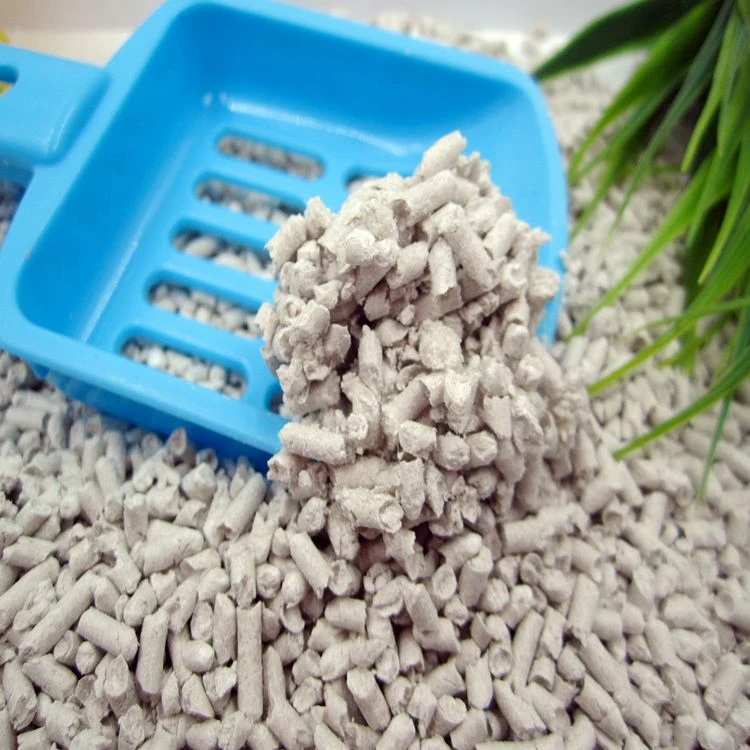
Conclusion
The choice between silica cat litter and clumping cat litter depends largely on individual preferences and circumstances. Silica litter offers superior odor control and low maintenance, making it ideal for busy households or those particularly concerned about odor. On the other hand, clumping litter provides ease of cleaning and cost-effectiveness, which can be more suitable for budget-conscious owners and those whose cats prefer a more natural digging experience.
When selecting a cat litter, consider factors such as cost, convenience, cat preference, and environmental impact. Experimenting with different types may be necessary to find the perfect match for both you and your feline companion.
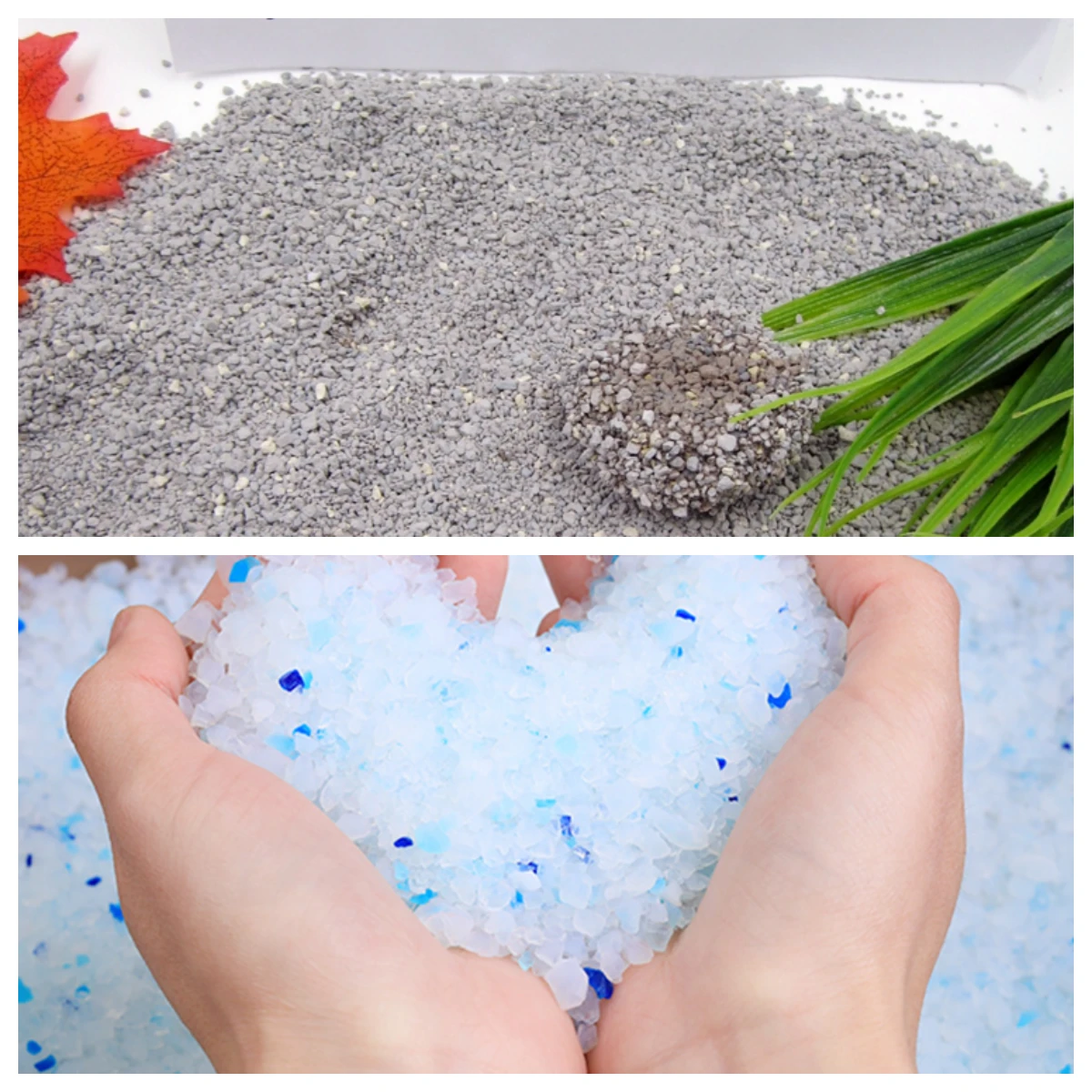
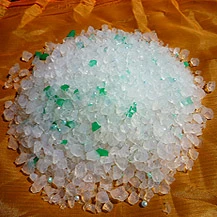
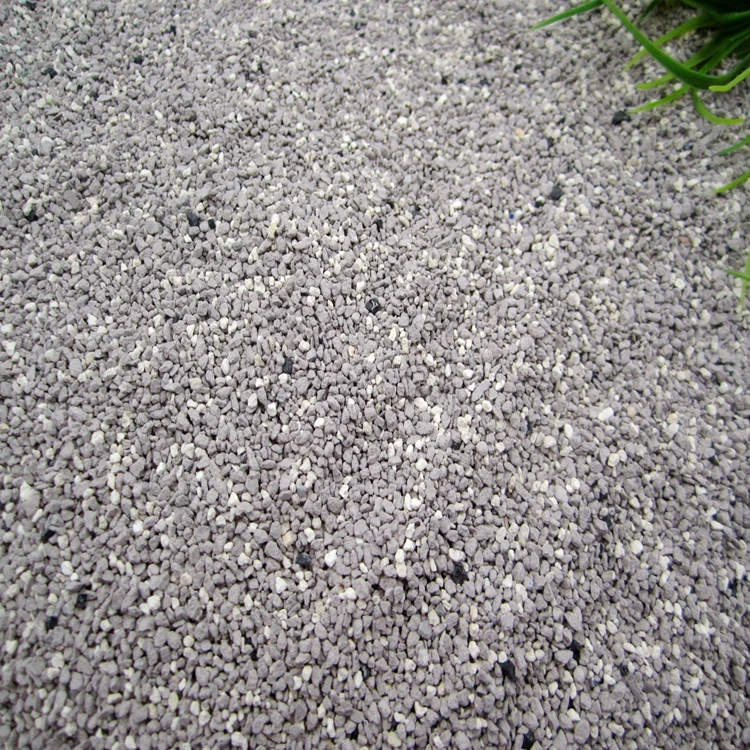
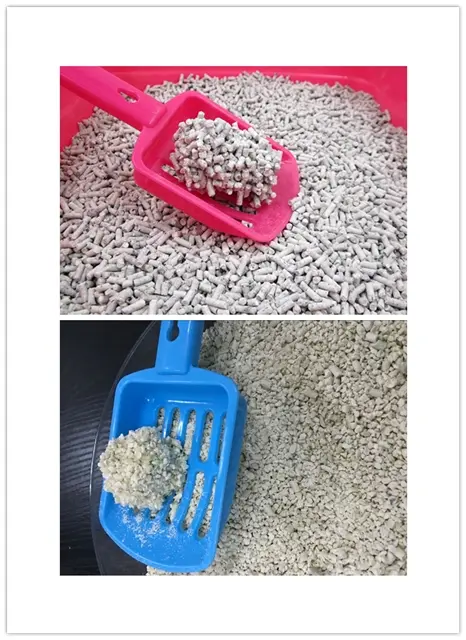


267.webp)
